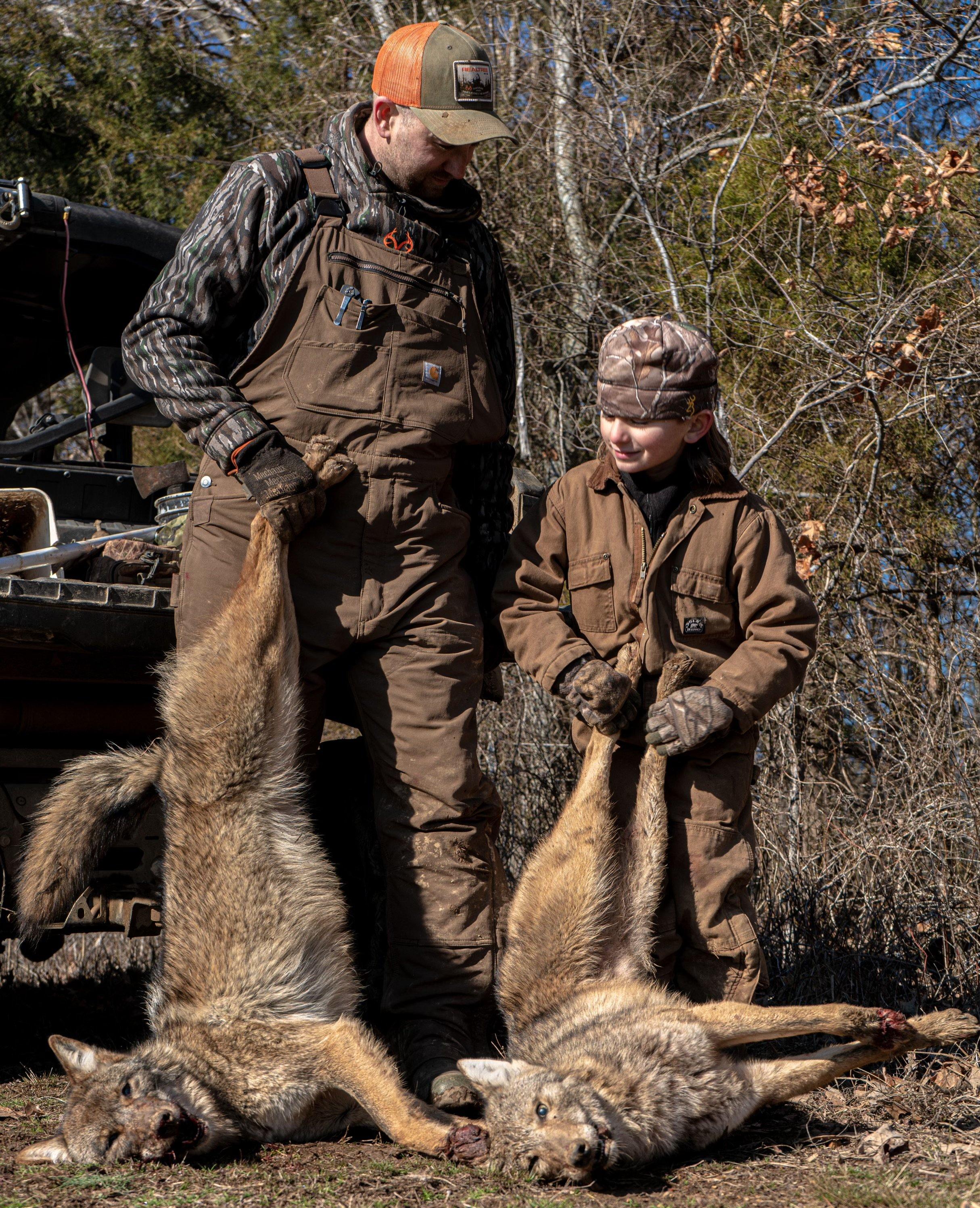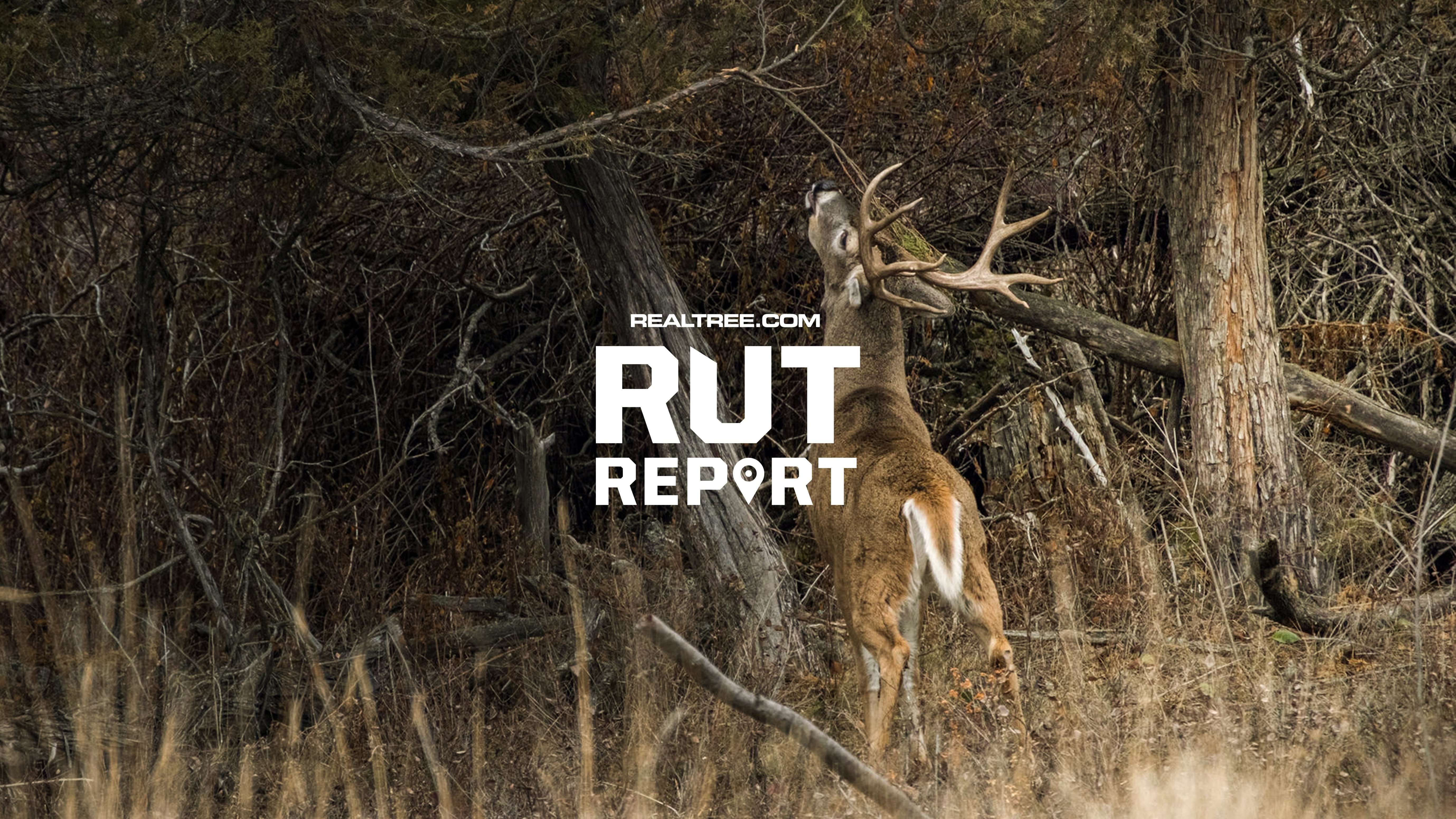Learn the basics of this proven set, and you'll be on your way to catching predators
There are several kinds of trapping sets for coyotes, but few are more versatile, easy to make, and effective than the classic dirt-hole. It’s a setup that can also be used to target other predators. It was originally designed for trapping foxes, and it works great for that, but I catch multiple bobcats, raccoons, and opossums each season in my dirt hole sets, too. Slight adjustments in location can tilt the odds in your favor for some of those other species, but the basics for making the setup don’t change.
LOCATION MATTERS
Coyotes don’t live or hunt everywhere, and so setting the perfect trap in the wrong spot will rarely catch anything. Ideally, you’ve done some scouting already, and you know where you’re seeing predators on the farm you’re trapping. I trap the same places that I hunt, and so I lean heavily on the trail camera information I gather in the fall, during deer season, to tell me where to focus my trapping efforts in the winter.
But what if you’re trapping a new farm, or even on public land, where you don’t have any prior intel? Spend an afternoon walking and looking for sign; fresh tracks and droppings not only tell you that coyotes are around, but also where they’re comfortable stepping.
Coyotes particularly love to walk open paths near heavy cover where they can scent for prey; in fact, show me a dirt road through a farm with thickets and fields, and I can probably show you a predator thoroughfare where you should begin your trapping efforts. Intersections, where multiple roads, trails, ridges, or edges convene are especially productive. Put your trap right where you’re seeing tracks if possible.

This pair of Kentucky coyotes both fell for dirt-hole sets within 100 yards of one another. Realtree Media Image
SWEAT THE SETUP
Scents help pull coyotes to your setup regardless of which trail they’re using, but taking advantage of natural topography and vegetation positions them for a good catch. You want some sort of “backing” for your dirt hole that keeps the coyote from circling it and digging on the side opposite of the trap. But this shouldn’t be a big obstacle; a clump of grass is all it takes. Many new coyote trappers make the mistake of dragging up logs, sticks, and rocks to create backing at their sets. In my experience, coyotes are suspicious of that stuff, and much prefer to work a setup that’s not confining.
DON’T MISS: 11 Cool Facts about Shed Antlers
DIG A TRAP BED
Your trap needs to be buried just out of sight, but not too deep. I like the jaws and pan covered by no more than ? inch of waxed dirt and area soil. Your trap should be connected via J-swivels to a length of chain, quick connector, and a good earth anchor on stout cable (these are available from any trapping supply retailer). Earth anchors allow you to set a trap exactly where it needs to be, and coyotes cannot pull them out if they’re set properly with an anchor driver.
The bed you dig for your trap needs to be just big enough for the trap’s jaws (usually about 6 inches in diameter), and with a slight cutout on each side to make room for the traps levers (assuming you’re not using an old-school long-spring trap). I then dig a hole about 3 inches deep and a couple inches across to about the 2 o’clock of my trap, which is where I drive in the earth anchor and then pile the chain on top.
DIG THE DIRT HOLE
I use the same Ground Hog trapping hammer (get one if you don’t have one) to dig my trap bed, set my earth anchors, and dig the dirt hole under the backing. I like the dirt hole to be about the diameter of a golf ball, and as deep as I can get it (you’ll have to work the hammer handle a bit and pull a plug or two of soil out of it to get it right).
The dirt hole should be 4 to 6 inches from the center of the trap pan, and dug into the ground at about a 45-degree angle; that part is important. It keeps the dirt hole from filling up with water, but it also, as much as the backing, naturally encourages the coyote to work the set from the trap side.
BED THE TRAP
Set the earth anchor, pile the chain into the 2 o’clock hole you dug, load the trap, and then press the jaws firmly into the edges of the trap bed. Then, take the soil you removed while digging the bed and carefully compact it around the jaws of the trap on all sides. Be careful that you don’t catch yourself. This step is extremely important; you don’t want a curious coyote to feel a loose trap bed or a wiggling trap under his feet. It’ll spook him every time. I also set clods of dirt or mud over the levers of the trap, but I don’t compress them as much because I want them to fire as cleanly as possible.
Conceal the trap on all sides, while leaving the jaws and pan exposed. I then like to place a cover over the pan, usually a sheet of waxed paper, and finally I cover the pan and trap springs with finely sifted and waxed dirt. I use a whisk broom or paint brush to carefully sweep the dirt into all nooks and crannies of the trap for a level finish.
The final step is taking a little additional soil from the nearby area and sifting it over the near-finished setup to conceal the set. Don’t be afraid to sprinkle some nearby leaves or short grass over the top of that trap if that’s what’s needed to camouflage the setup. The whole thing should be virtually impossible to see for anyone (or anything) who doesn’t know that it’s there. Sweep away any excess dirt from around the trap. Some like to add sticks or rocks around the trap for guiding a coyote’s foot to the pan, but I rarely do. The placement of the dirt hole pretty much takes care of that.
LURE AND BAIT
I like to wear leather mechanic’s gloves when making the set, and I don’t worry too much about scent control (you can’t beat a coyote’s nose). But I do change gloves when handling lures and bait because I don’t want those scents contacting the traps.
Take a small stick and get a little gob of your favorite bait, about the size of your pinky nail, and drop it down into the bottom of the dirt hole (I like Hoosier Trapping Supply Top Dog or Pingley’s Professional Lures Wyoming Relish, but it all works).
Next, take a bit of lure and smear it on the backing; gland lures or gels (like Dunlap’s Hellfire) have worked well for me. I’ll finish things with a little shot of fox urine sprinkled across the pathway near the set, ideally on the downwind side to attract the curiosity of passing coyotes.
I’ve caught coyotes the very first night after making a setup, but usually, nights 2-6 work best, and I like to leave a trapline out for at least 10 days at a time. How many sets do you need? The more, the merrier, so long as you have the time to check them each day. Anywhere that you see coyote sign is worth a setup, and anywhere you set one trap is probably worth setting two or three. Many of your coyote catches will come in pairs, on traps set within 50 yards of one another.
DON’T MISS: Utah Doubles Bounty on Coyotes












